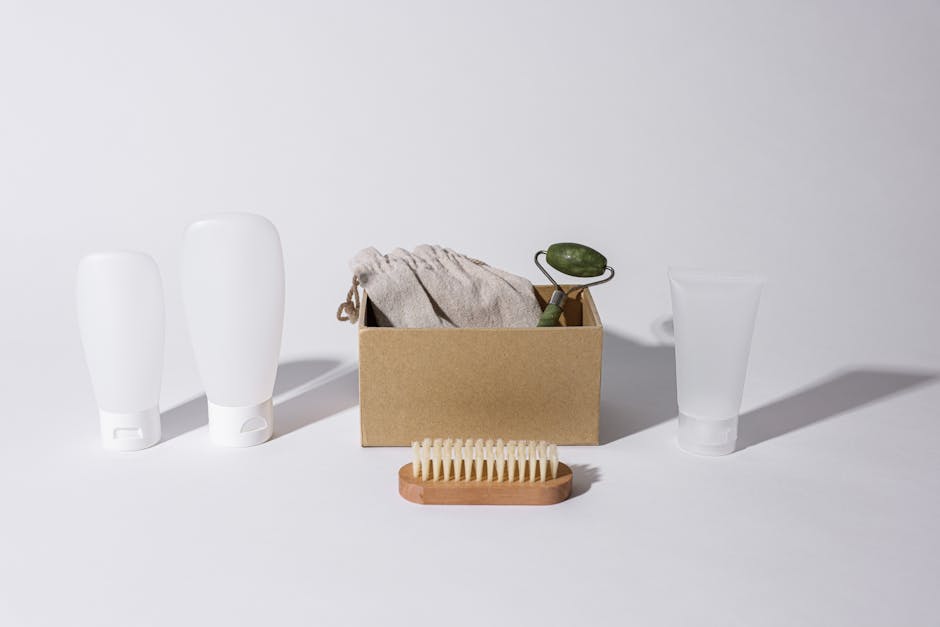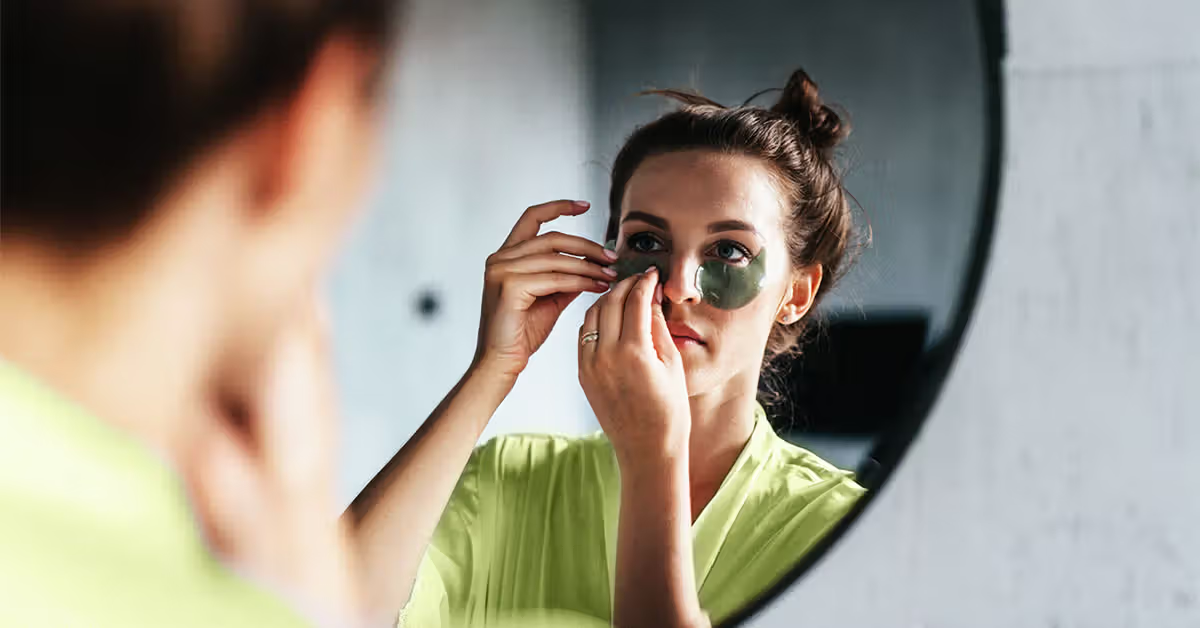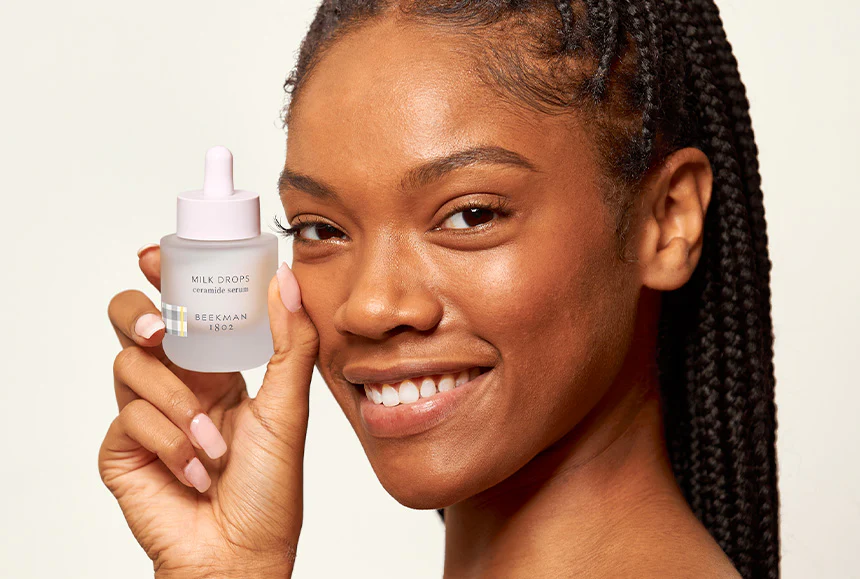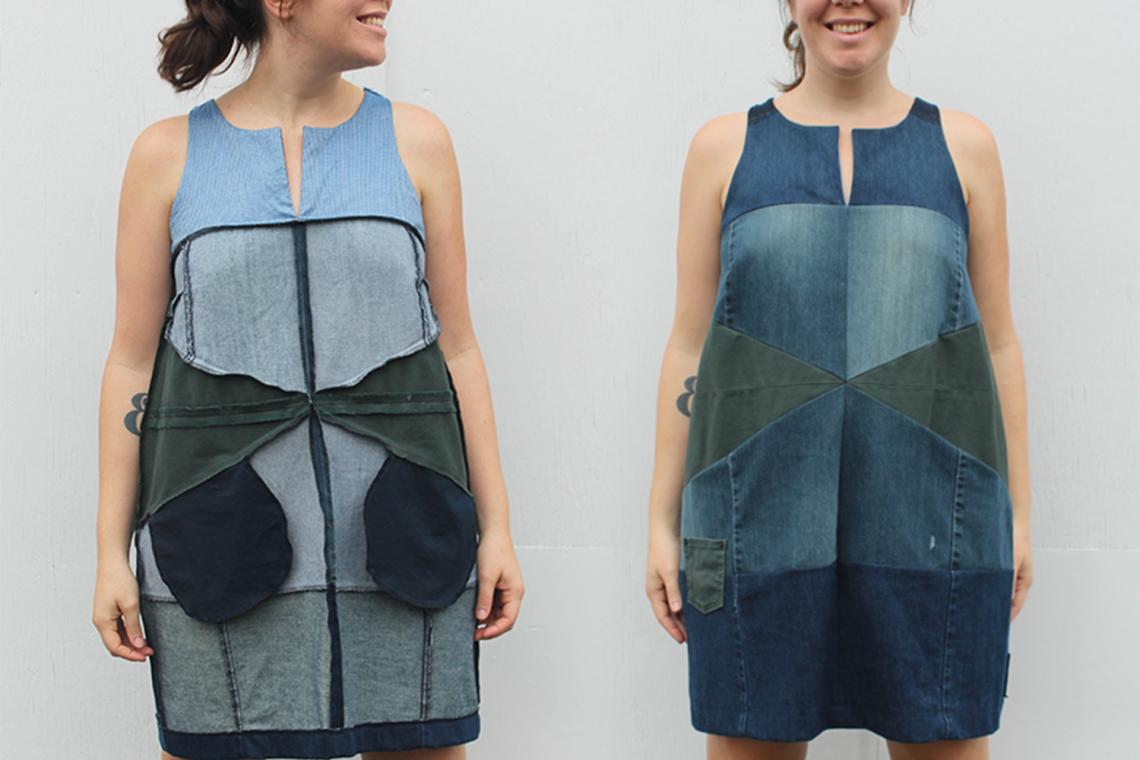The Truth About No Rubbish Skincare: Is It Worth Your Time?
No rubbish skincare refers to sustainable, zero-waste beauty products that minimize environmental impact through plastic-free packaging, refillable containers, and clean ingredients. Here’s what you need to know:
- Definition: Skincare products with minimal packaging waste, recyclable/compostable materials, and transparent ingredient lists
- Key benefits: Reduces environmental impact, often contains fewer irritants, supports ethical business practices
- Average cost: Slightly higher upfront but often more concentrated and longer-lasting
- Effectiveness: Comparable to conventional products when formulated properly
- Popular formats: Solid bars, glass containers, refill systems, waterless formulations
I’m not going to lie, I’ve historically been a sucker for the marketing of beauty products,” confesses one beauty writer in our research. But after diving into zero waste skincare, many consumers find themselves asking: is this just another trend, or a meaningful shift in how we approach beauty?
The beauty industry produces over 120 billion units of packaging annually, with most ending up in landfills. That’s a lot of rubbish. No rubbish skincare aims to solve this problem by eliminating unnecessary packaging, using sustainable materials, and focusing on ingredient quality rather than flashy marketing.
What makes this approach different is its holistic view of sustainability. It’s not just about what’s in the bottle (though that matters too), but the entire lifecycle of a product from creation to disposal.
When done right, no rubbish skincare delivers effective results without the environmental guilt. Many sustainable brands prove that you don’t need excessive packaging or synthetic fillers to create products that work.
The movement represents a fundamental shift away from the “more is more” philosophy that dominated beauty for decades. Instead, it accepts thoughtful minimalism, ingredient transparency, and packaging innovation.

What Does “No Rubbish Skincare” Actually Mean?
Ever opened your bathroom cabinet and felt overwhelmed by plastic bottles? That’s exactly what no rubbish skincare aims to eliminate. This isn’t just clever marketing—it’s a comprehensive approach that accepts circular economy principles where products and materials continue their journey rather than ending up in landfill.
Think of no rubbish skincare as beauty with conscience. It’s about creating products that work brilliantly for your skin while treading lightly on the planet.
When I first explored this concept, I was amazed by the innovation happening in this space. Companies are now creating waterless formulas that pack more punch with less packaging. These concentrated products don’t need water dilution (which means they’re not shipping water around the globe) and they last significantly longer on your bathroom shelf.
Many brands have also perfected multifunctional balms that cleanse, moisturize, and remove makeup—all in one beautiful product. I’ve personally replaced three plastic bottles with a single glass jar of balm that does it all!
The heart of this movement lies in thinking differently about our relationship with products. Refill systems allow you to keep beautiful containers and simply top them up when needed. Compostable packaging returns to the earth without harm. Ethical sourcing ensures ingredients are obtained fairly and sustainably.
“Beauty and self-care are inseparable from sustainability,” notes one industry expert I spoke with. When you choose no rubbish skincare, you’re participating in lifecycle thinking—considering where your products come from and where they’ll end up.
The 5-Second Definition of No Rubbish Skincare
If someone asked you in an elevator what no rubbish skincare means, here’s your answer: It’s skincare with a zero landfill goal, where what’s inside the product is as thoughtfully created as the packaging it comes in.
This product-to-packaging synergy is what makes the difference. A beautiful glass bottle isn’t truly sustainable if the formula inside contains microplastics. Similarly, a clean formula loses its environmental credentials when packaged in single-use plastic that will outlive us all.
As one zero waste advocate eloquently put it: “Every skincare choice carries a moral weight.” When you choose products with this philosophy, you’re supporting a vision of beauty that doesn’t come at the planet’s expense.
How It Differs From “Clean Beauty”
I often hear people using “clean beauty” and “no rubbish skincare” interchangeably, but they’re actually distinct concepts with important differences.
Clean beauty primarily focuses on non-toxic ingredients that won’t harm your body. It’s about removing potentially harmful substances like parabens, phthalates, and synthetic fragrances from formulations. While this is absolutely valuable for personal health, clean products may still come in conventional plastic packaging.
No rubbish skincare takes a more holistic approach. It addresses both what’s in the formula AND what contains it. It prioritizes minimal, sustainable packaging alongside clean ingredients. The focus expands beyond personal benefits to include planetary health.
While clean beauty might eliminate specific “toxic” ingredients from your routine, no rubbish skincare examines the entire lifecycle impact—from ingredient sourcing to manufacturing to packaging to disposal.
As Georgia Day beautifully observed about one zero waste brand: “Their range is carefully and mindfully crafted.” This mindfulness extends to every aspect of production, not just what goes on your skin.
Why Traditional Skincare Is A Waste Problem
The beauty industry has a dirty little secret hiding in plain sight: it produces over 120 billion packaging units annually. Let that sink in for a moment. Most of this is plastic, and sadly, only 9% of all plastic waste ever produced has been recycled. The rest? It ends up cluttering landfills, choking our oceans, or being incinerated—creating an environmental burden we can no longer ignore.

Your bathroom cabinet might be harboring more environmental culprits than you realize. Traditional skincare contributes to our waste crisis in ways both obvious and subtle. Those pretty single-use plastic pumps and bottles often can’t be recycled due to mixed materials or small components. Many exfoliating products still contain microplastics that wash down our drains and eventually make their way into waterways and food chains.
“Major retailers promise radiant skin and bouncy hair, but mass-market products often fall short—and half-used jars end up in the trash,” notes one industry observer. This cycle of purchase, disappointment, and disposal is shockingly common, with estimates suggesting 20-40% of beauty products are tossed before being fully used.
The problem goes beyond just packaging. Many products come wrapped in excessive layers of plastic, cardboard, and cellophane—all for a product designed to be used up quickly and replaced. And let’s not forget those tiny sample sachets that provide a single use but create waste that lasts for generations.
The beauty industry’s plastic issue is finally getting the attention it deserves, but solutions require fundamental changes to how products are created, packaged, and consumed.
Hidden Environmental Costs in Your Bathroom Cabinet
The environmental footprint of your skincare routine extends far beyond what you can see. Behind every pretty jar lurks a chain of hidden environmental costs that rarely make it onto the label.
The manufacturing of conventional plastic packaging is incredibly energy-intensive, requiring significant fossil fuel resources at every stage. Those heavy glass containers and water-filled formulas? They dramatically increase shipping emissions as products travel thousands of miles to reach your bathroom shelf.
Many synthetic ingredients wash down drains, creating toxic runoff that harms aquatic ecosystems. Even “natural” ingredients can cause problems when harvested unsustainably, leading to resource depletion and habitat damage. The chemical processes required to create many synthetic ingredients often involve environmentally harmful solvents and byproducts.
A typical 10-step skincare routine might involve dozens of packaging components, hundreds of ingredients, and a global supply chain—all for products that might be used for just a few months before being replaced by the next promising formula.
The Human Health Angle
The environmental crisis in skincare isn’t just about the planet—it’s about our bodies too. Many conventional products contain ingredients with questionable safety profiles that may affect human health.
Endocrine disruptors found in some skincare products can interfere with hormone systems, potentially affecting everything from metabolism to reproductive health. Harsh surfactants and preservatives may function as skin barrier stressors, damaging your skin’s natural protective layer over time.
Sensitizing agents like synthetic fragrances and dyes are among the most common triggers for allergic reactions in cosmetics. Perhaps most concerning are bioaccumulative compounds—substances that don’t readily leave the body and may build up in tissues over time.
“No joke, a simple plant-based oil moisturizer will rock your world,” shares one convert to natural skincare. Many people report significant improvements in skin sensitivity, irritation, and overall health after switching to simpler, less processed formulations with fewer ingredients.
The good news? We’re witnessing a growing awareness that what’s good for the planet is often good for our bodies too. No rubbish skincare addresses both concerns simultaneously, offering solutions that protect both environmental and human health.
Scientific research on microplastics
Core Principles of a No Rubbish Routine
Embracing no rubbish skincare isn’t just about what you buy—it’s about changing your entire approach to beauty. Think of it as a mindful relationship with your products rather than a fleeting romance with the latest trends.

When I first switched to a low-waste routine, I was surprised by how much simpler—and more effective—my skincare became. The core principles below aren’t just good for the planet; they’re genuinely better for your skin and wallet too.
Principle #1: Buy Less, Use It All
The beauty industry thrives on convincing us we need more, but no rubbish skincare flips this notion on its head. The most sustainable product? The one you don’t buy at all.
Instead of cluttering your bathroom with single-purpose products, look for hard-working multitaskers that pull double or triple duty. That luxurious cleansing balm that also removes makeup? Perfect. The facial oil that works just as well on your cuticles and hair ends? Even better.
“I’m now really happy with a few hard-working multi-taskers,” shares one converted minimalist. “My bathroom is less cluttered, my routine is faster, and my skin has never looked better.”
Anhydrous concentration is another game-changer. Water-free formulas not only last significantly longer (sometimes 2-3 times as long as conventional products), but they also require less packaging and weigh less to ship. Brands like Bee You Organics have mastered this approach, creating concentrated products that give you more bang for your buck while reducing environmental impact.
The simple act of finishing what you start before buying something new can dramatically reduce waste. It sounds obvious, but how many of us have bathroom drawers filled with half-used products?
Principle #2: Packaging With a Second Life
In the no rubbish skincare world, packaging isn’t trash waiting to happen—it’s a resource with potential for many lives.
The best brands are designing with the end in mind, creating containers that don’t just hold product but serve a purpose long after the last drop is gone. Return schemes like those pioneered by Plaine Products turn the traditional consumption model upside down: their aluminum bottles can be sent back, cleaned, refilled, and used again and again.
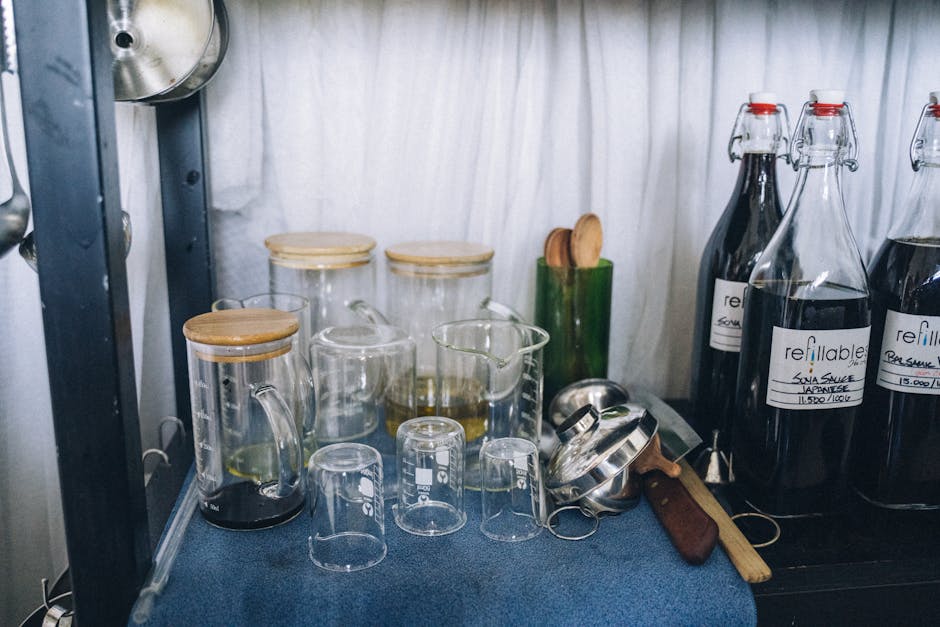
Home compostability is another frontier in sustainable packaging. Unlike industrial composting that requires special facilities, truly compostable packaging breaks down in your backyard bin alongside coffee grounds and vegetable scraps.
As Package Free Shop succinctly puts it: “Every zero waste skin care product sold is designed to be reused, refilled, composted or recycled.” This circular approach means nothing ends up in the landfill—everything has a second (or third, or tenth) life.
Those beautiful amber glass jars? They make perfect containers for homemade body scrubs or tiny succulent planters. The tin that held your solid lotion? It’s perfect for storing earrings while traveling.
Principle #3: Ethical & Local Ingredients
What’s inside matters just as much as the container. No rubbish skincare extends its consciousness to the origins of each ingredient.
Fair trade isn’t just a nice-to-have label—it ensures farmers and workers receive fair compensation for their labor and crops. When you choose products with ethically sourced ingredients, you’re supporting communities and traditional knowledge systems that have often been exploited by the beauty industry.
Small-batch production creates less waste while supporting artisanal methods that often yield higher-quality products. There’s something special about knowing your face oil was carefully blended by hand rather than pumped out by the gallon in a factory.
Brands like EcoRoots demonstrate this principle beautifully as members of 1% for the Planet, directing a portion of their profits to environmental organizations like Ocean Conservancy. Similarly, Friendly Soap supports tree-planting initiatives and clean water projects worldwide.
“Imagine, for a moment, a world where every dab of moisturizer carries a story not just of beauty, but of hope, kindness, and respect,” writes one advocate. This narrative connection transforms your skincare routine from a mundane daily task into a meaningful ritual that connects you to people and places around the world.
More info about ingredient terms
No Rubbish Skincare Buying Guide
When shopping for no rubbish skincare, it helps to look beyond pretty packaging and clever marketing. Trust me, I’ve been fooled by beautiful bottles promising the world but delivering little more than waste and disappointment!

Spotting Genuine “No Rubbish” Claims
Greenwashing is everywhere these days – companies slapping earthy colors and leaf icons on products that are anything but sustainable. Here’s how I’ve learned to spot the real deal:
Third-party certifications are your best friends in this journey. Look for trusted marks like B Corp, USDA Organic, and Leaping Bunny – these companies have actually proven their commitment, not just claimed it. When sustainable brands proudly display their Climate Neutral and Plastic Negative certifications, it means something tangible: they’re offsetting more plastic than they use.
The packaging itself tells a story. Authentic no rubbish skincare brands use materials with a future – glass that can be endlessly recycled, aluminum that never degrades, or truly compostable paper. If a brand claims to be eco-friendly but wraps everything in plastic, that’s your first red flag.
Always, always read the full ingredients list! Those tiny microplastics (often listed as polyethylene) hiding in your “natural” scrub will be washing down drains and into oceans for centuries. And beware of vague, meaningless terms like “eco-friendly” or “green formula” without any specifics to back them up.
“When a brand is truly committed to sustainability, they’re usually excited to talk about it in detail,” a zero waste shop owner once told me. “The ones with something to hide keep it vague.” So true!
Budget-Friendly Options for Beginners
I remember feeling overwhelmed when I first looked at the prices of some zero waste products. But here’s the good news: starting your no rubbish skincare journey doesn’t have to empty your wallet.
Plant oils are your secret weapon. A good-sized bottle of jojoba or rosehip oil in glass packaging might seem pricey upfront, but it replaces multiple products in your routine. My friend Sarah swears by organic coconut oil: “I use it to remove makeup, moisturize my body, and even condition my hair ends – one $12 jar lasts me months!”
Solid cleansing bars are another game-changer. They typically last 2-3 times longer than bottled cleansers since they’re not diluted with water. Plus, they travel beautifully – no more liquid spills in your suitcase!
I’ve fallen in love with DIY toners made from witch hazel or green tea. They cost pennies to make, work beautifully, and create zero waste when stored in a repurposed glass bottle.
Many sustainable brands have amazing refill programs that can save you a small fortune. You pay only for the product itself after your initial purchase, not new packaging each time. Over a year, the savings really add up.
Comparing Effectiveness With Conventional Products
“But does it actually work?” That’s the million-dollar question, isn’t it? After trying dozens of no rubbish skincare products, I can honestly say: the best ones work just as well, if not better, than their conventional counterparts.
The secret is in the concentration. Without water as the first ingredient (as it is in most conventional products), zero waste formulations often deliver more active ingredients per use. One powder mask I love provides the same 5% vitamin C concentration as premium serums in plastic packaging, but lasts three times as long.
There’s also something to be said for simpler ingredient lists. Many people, including Saskia who shared her experience with me, find their skin actually improves after switching: “My redness disappeared within weeks! I think my skin was reacting to all the unnecessary ingredients in my old products.”
While the initial investment might be higher (a quality cleansing bar might cost $15-20), the cost-per-use often works out lower than conventional alternatives. My favorite solid moisturizer bar lasted six months of daily use – try getting that longevity from a cream in a plastic tub!

The innovation happening in this space is truly exciting. Brands are finding clever ways to deliver active ingredients like peptides and vitamin C in solid or waterless forms, proving that effectiveness doesn’t have to come with environmental compromise.
Transition Tips & DIY Hacks for a No Rubbish Skincare Routine
Ready to dive into no rubbish skincare but feeling a bit overwhelmed? Don’t worry—I’ve been there too! The good news is you don’t need to overhaul your entire bathroom cabinet overnight. In fact, a gentle, step-by-step approach often leads to lasting changes that stick.
The Gradual Swap Method
Think of transitioning to zero waste like learning to ride a bike—start with training wheels before hitting the mountain trails. Begin by simply replacing products as they run out rather than tossing perfectly good items. I always suggest starting with the easiest swaps first: perhaps a lovely solid soap bar to replace your plastic-bottled body wash, or a plant oil that works beautifully as makeup remover.
“It’s taken time to wean myself off buying lots of skincare products,” one zero waste convert shared with me, “but now I actually spend less and my skin looks better.” The key is patience—this is a journey, not a race.
Look for opportunities to consolidate your routine with multi-tasking products. That facial oil that also works on cuticles and hair ends? That’s three products in one! As you introduce new items, give your skin time to adjust by testing one product at a time. Many people find it eye-opening to track their bathroom waste—watching that bin get emptier each week provides wonderful motivation to continue.
Pantry-to-Bathroom DIY Solutions
Some of the most effective skincare ingredients might already be sitting in your kitchen! Finely ground oats make a gentle, soothing cleanser that works wonders for sensitive skin. Those coffee grounds you were about to toss? Mix them with coconut oil for an invigorating body scrub that rivals expensive store-bought versions.
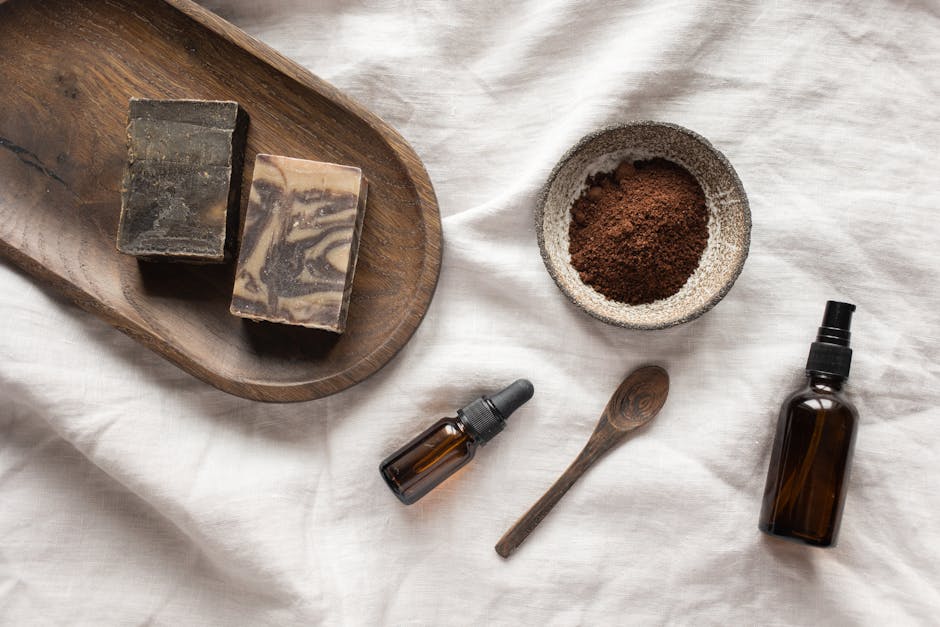
Raw honey works beautifully as both a hydrating face mask and spot treatment, while everyday plant oils like olive, coconut, or avocado can replace expensive moisturizers. One of my personal favorites is using cooled green tea as an antioxidant-rich toner—simply brew, cool, and apply with a reusable cotton round.
Tool Care for Longevity
Taking care of your sustainable tools ensures they last longer—saving both money and resources. For konjac sponges, one expert advises: “Soak until soft, gently massage over the face, store in a glass jar to keep moist, and compost after about three months.”
Facial cloths need immediate rinsing after use (trust me on this one—dried makeup is nearly impossible to remove later) and should be hung to dry between uses, with a weekly wash to keep them fresh. Metal tools like gua sha stones or tweezers should be cleaned with alcohol and stored dry to prevent rust, while glass containers need proper sterilization before refilling.
No Rubbish Skincare for Acne-Prone Skin
I used to think my acne meant I was stuck with plastic-packaged products forever, but that’s simply not true! No rubbish skincare offers plenty of solutions for breakout-prone skin. Jojoba, hemp, and grapeseed oils closely mimic your skin’s natural sebum, making them less likely to clog pores despite being oils.
French green or bentonite clay (often sold in compostable paper packaging) works wonders for drawing out impurities, while enzyme powders provide effective chemical exfoliation without harmful microbeads. Tea tree preparations offer natural antibacterial properties that help manage breakouts, and ingredients like witch hazel and niacinamide are increasingly available in zero waste formats.
“Many sustainable beauty brands use rescued food waste to create effective skincare,” one reviewer noted, highlighting how innovative companies are creating powerful acne solutions with sustainable ingredients like repurposed coffee grounds. Who knew yesterday’s brew could help clear tomorrow’s breakout?
Travel & On-the-Go Solutions
Maintaining your no rubbish commitment while traveling used to be my biggest challenge—until I finded some clever solutions. Solid sunscreen bars eliminate the need for plastic tubes and won’t count toward your liquid allowance when flying. Small aluminum or glass containers can be refilled from your full-size products at home, saving money and reducing waste.
Lightweight aluminum tins work beautifully for balms and solid products, while protective cases made from materials like cork or bamboo offer compostable alternatives to plastic travel containers. I’ve fallen in love with multi-purpose products that serve triple duty as cleanser, shampoo, and body wash—that’s three fewer bottles to pack!
As one seasoned traveler told me, “Using a beauty balm that doubles as a facial cleanser, daily moisturizer, and overnight mask” dramatically reduced her toiletry waste while ensuring she never sacrificed her skincare routine on the road.
The beauty of no rubbish skincare is that it forces creative thinking that often results in simpler, more effective routines—whether you’re at home or exploring the world.
Frequently Asked Questions about No Rubbish Skincare
Does no rubbish skincare really work as well as traditional products?
The short answer? Absolutely! No rubbish skincare can match—and often exceed—the effectiveness of conventional products. It’s all about the quality of ingredients, not the fancy packaging they come in.
What makes these products perform so well is their concentrated formulations. Without water fillers, you’re getting higher percentages of active ingredients in every application. As one enthusiastic convert told us, “No joke, a simple plant-based oil moisturizer will rock your world.”
There are some differences you’ll notice when making the switch. Solid bars feel different in your hands than liquid pumps. You might need to tweak your application techniques slightly. Natural preservation systems work differently than synthetic ones, and shelf life might be shorter—though that’s rarely an issue since these products are typically used completely rather than languishing half-empty in your cabinet.
The beauty establishment has taken notice too. British Vogue, GQ, and other prestigious publications now regularly feature zero waste skincare brands, acknowledging that their performance rivals traditional luxury products. In recent years, innovations like waterless technology have revolutionized the space, delivering potent actives without environmental compromise.
How do I dispose of empty containers responsibly?
Responsible disposal depends on what your container is made from, and it’s easier than you might think.
For glass containers, give them a thorough rinse, remove any non-recyclable components like certain pumps or lids, and place them in your glass recycling. Better yet, clean them well and repurpose them for DIY products, storage, or even as tiny vases or candle holders.
Aluminum packaging is fantastic because it can be infinitely recycled without losing quality. Clean it completely, check if the brand offers a return program (many do!), and if not, place it in your metal recycling bin.
For paper or cardboard packaging, first make sure it’s not lined with plastic. Uncoated paper can go in your compost, while clean, dry cardboard is perfect for recycling.
With compostable materials, it’s important to verify whether they need industrial facilities or can break down in home composting systems. Following specific breakdown instructions helps, and cutting items into smaller pieces speeds up decomposition.
Many forward-thinking brands now offer take-back programs. Several sustainable companies have created circular systems where you can return empty containers for refilling—eliminating waste while maintaining product quality.
Are refill programs hygienic and safe?
I understand the concern—we’ve all been conditioned to equate “new” with “clean”—but well-managed refill programs maintain excellent hygiene standards.
When you return containers to sustainable companies, they undergo rigorous professional cleaning processes. This typically includes high-temperature sterilization treatments that eliminate all bacteria and contaminants. Responsible companies inspect each container before refilling and are transparent about their sanitization protocols.
If you’re using self-refill options at bulk stores, there are simple steps to ensure safety:
– Clean your containers thoroughly before refilling
– Choose stores with visible hygiene protocols for their dispensers
– Use containers with secure, airtight closures
– Label your refills with dates to track freshness
Many consumers report years of using refill programs without any contamination issues. The safety is comparable to new packaging when proper protocols are followed, with the added benefit of significantly reducing waste.
The beauty of no rubbish skincare isn’t just about what it does for your skin—it’s about creating a more sustainable beauty routine that aligns with your values without sacrificing results.
Conclusion
After diving deep into no rubbish skincare, it’s clear this movement represents a genuine shift in beauty—not just another fleeting trend. The benefits go far beyond simply reducing plastic waste. They extend to supporting ethical ingredient sourcing, promoting healthier skin through simpler formulations, and encouraging us all to consume more mindfully.
I love how one converted minimalist put it: “I’m now really happy with a few hard-working multi-taskers.” This perfectly captures what no rubbish skincare is all about—finding genuine joy in simplicity and purpose rather than endless product accumulation.
The numbers don’t lie. With the beauty industry churning out over 120 billion packaging units yearly and a mere 9% of plastic ever making it to recycling, our skincare choices carry real environmental weight. The brands making authentic efforts to address these issues deserve both our recognition and our support.
It’s inspiring to see sustainable beauty companies planting trees for orders and donating portions of sales to conservation efforts. Many eco-conscious brands sponsor the removal of beach trash with each purchase. These initiatives show how business models can genuinely align with environmental stewardship without sacrificing product quality.
For those of you just beginning your no rubbish skincare journey, remember—perfection isn’t the goal, progress is. Start with simple swaps as your current products run out. Experiment with those wonderful multi-purpose items. Gradually build a routine that works beautifully for both your skin and your values.
What makes this approach so accessible is its flexibility. Whether you’re drawn to professionally formulated products in sustainable packaging or prefer creating DIY solutions from your kitchen ingredients, there’s a path forward that aligns with your preferences and budget.
As we continue exploring sustainable beauty here at Beyond Beauty Lab, we’re truly encouraged by the innovation and commitment we’re seeing in the no rubbish movement. The future of skincare isn’t about deprivation or sacrifice—it’s about making thoughtful choices that benefit our skin, our communities, and our planet.
Ready to take the next step? We’ve got you covered.
Clean Beauty Products – explore our curated zero-waste picks courtesy of Beyond Beauty Lab

